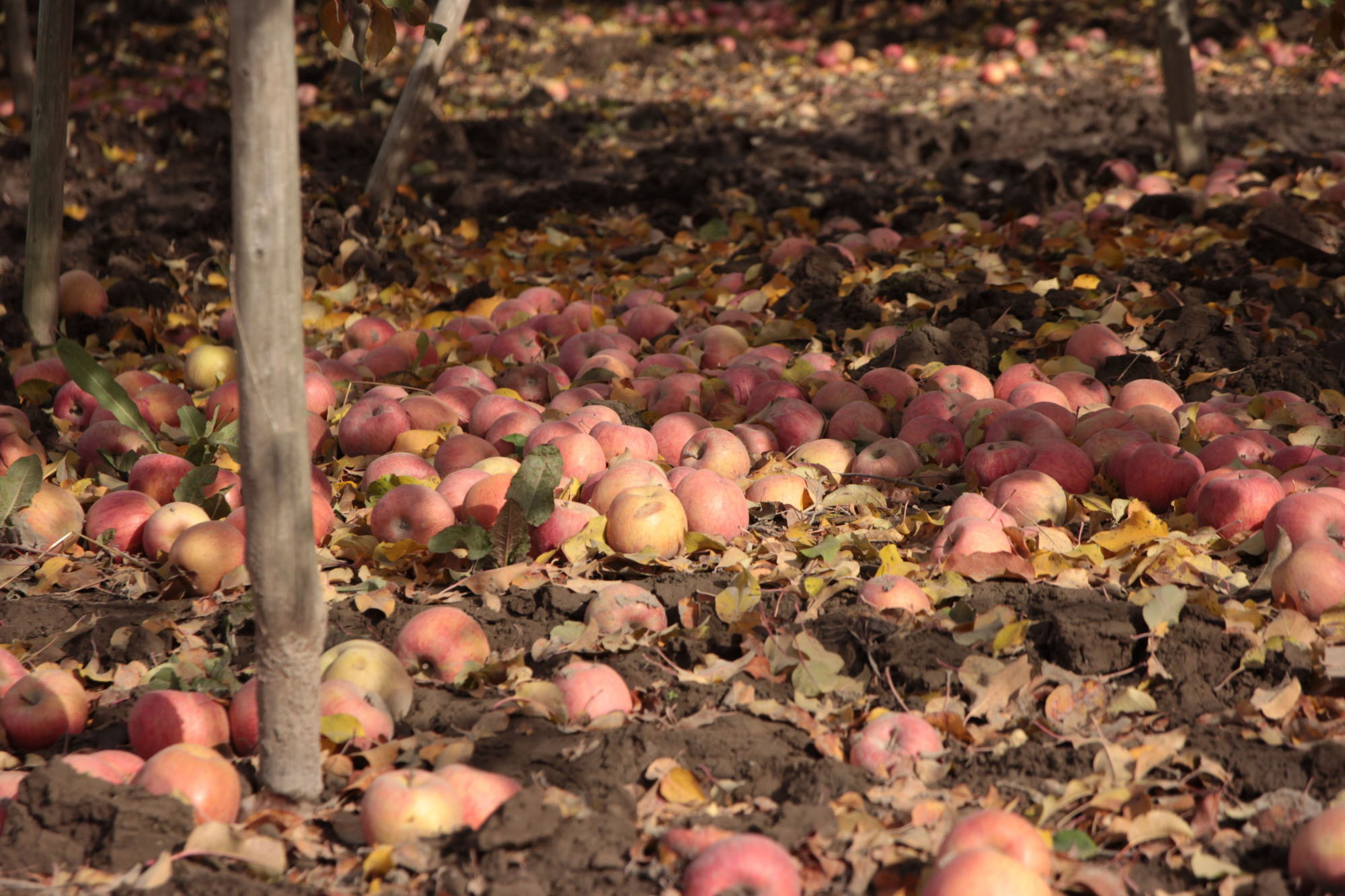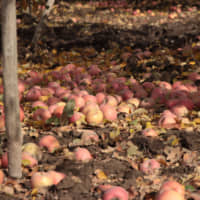Just before Christmas I donned my Santa Claus suit and fluffy white beard and headed around 20 kilometers south down to Nagano.
There, I distributed simple gifts and (hopefully) some good cheer to many children whose kindergartens and homes were damaged or destroyed in floods caused by Typhoon Hagibis that swept through on Oct. 13 and 14.
That was the worst storm in these parts for 60 years, and the heavy rains led to the Chikuma River breaching its embankments and inundating huge areas of its floodplain — including a depot where 10, 12-car shinkansen trains were parked. Valued at ¥11.8 billion, they are now being scrapped.
I have lived in the Nagano Prefecture hills since 1980, with the Torii River flowing right past my study on its way to join the 367-kilometer Chikuma, Japan's longest river, whose name changes to the Shinano before it empties into the Sea of Japan at Niigata.
When the typhoon struck I was away, and I felt guilty that many friends and neighbors had joined in rescue efforts and cleanups while a longtime resident like me was absent. So the Santa gig was a tiny little gesture, and one of my oldest friends, Keisuke Yamanaka, who had helped to rescue people by boat from their homes, took me around the devastated area.
Though I hadn't been any use before, at least appearing there in my festive getup perhaps lifted a few people's spirits and offered encouragement to the volunteers still shoveling mud and clearing debris.
When the floods hit, the big red apples for which the area is famous were just about ready to be harvested. Afterward, those not washed away were left hanging in the trees looking a bit grubby but seemingly fine to be eaten, although that was rightly forbidden because of contaminants in the floodwaters. Yet, as many of the trees themselves have survived, I hope the pollution won't affect them in the future.
Driving through this farming area where apples were just strewn around or had been gathered in piles, I couldn't help noticing that many of the houses had been expensively and even elaborately built. A lot of money had clearly been made from ringo, as apples are known in Japanese. Although commercial growing didn't really start until the Meiji Era (1868-1912), this country now produces some of the world's sweetest and most expensive varieties, including the renowned Fuji cultivar.
However, apple-growing here is very different from the way I knew it as a boy in Britain. There, many orchards were surrounded by stone walls, and the pickers needed to climb ladders because many of the trees were 6 meters high or more, while pigs were often let loose to munch on fallen, bruised fruit.
Forty years ago I wrote the lyrics for "Ringo no Ki ni Kakurenbo" ("Hiding in an Apple Tree"), which came second when I performed it in 1979 at the 17th Yamaha Popular Song Contest. It was later released by Toshiba EMI on my album "Sail Down The River," and I've sung it at dozens of concerts, including at the Budokan in Tokyo.
However, every time I do so, I have to explain that the apple trees I knew as a boy, when we'd hop into an orchard to quickly fill our pockets, were big enough to climb and hide in if we heard the farmer coming. You couldn't do that here, because Japanese apple trees are really a kind of bonsai, trimmed and trained so the fruit can be picked by people whose feet are firmly on the ground.
Meanwhile, although the Chikuma orchards are mostly on the river's floodplain, it doesn't seem terribly wise to build homes, kindergartens — or bullet train depots — there.
I've spent more of my life in Japan than anywhere else, and I love it, but at times I miss the part of Britain where I grew up amid a centuries-old culture proud of its cooking apples, its many kinds of eating apples and, of course, its real cider. In contrast, what the Chikuma valley has is more like an economy focused on a product — apples — and economies can be successful, but also shortsighted.
So already I've seen people rebuilding homes in the same places; and bigger, hugely costly dykes and embankments will doubtless be constructed to try and protect them. That's despite climate change seeming to point to more and bigger floods in the future.
Since the ancient cultures of the Nile, people the world over have tried to adapt to floods, even enlisting them as bringers of fertility. However, while good engineering is fine, I doubt it can ever really withstand the power of flowing water.
And as for Japan's wasteful and idiotic "Great Sea Wall of Tohoku" that's being built following 2011's awful tsunami — well, perhaps it's a good thing I don't have the space to get started on that monstrous bid to tame the Pacific!
Ringo no ki ni kakurenbo
(Hiding in an apple tree)
Otona wa sawaidemo kikoenai yo!
(No matter how the grownups yell, I can't hear)
Mahō no kuni e tonde yukou
(Let's fly off to a magical country)
Dare mo shiranai tokoro e!
(One that nobody knows about!)
C.W. Nicol



















With your current subscription plan you can comment on stories. However, before writing your first comment, please create a display name in the Profile section of your subscriber account page.